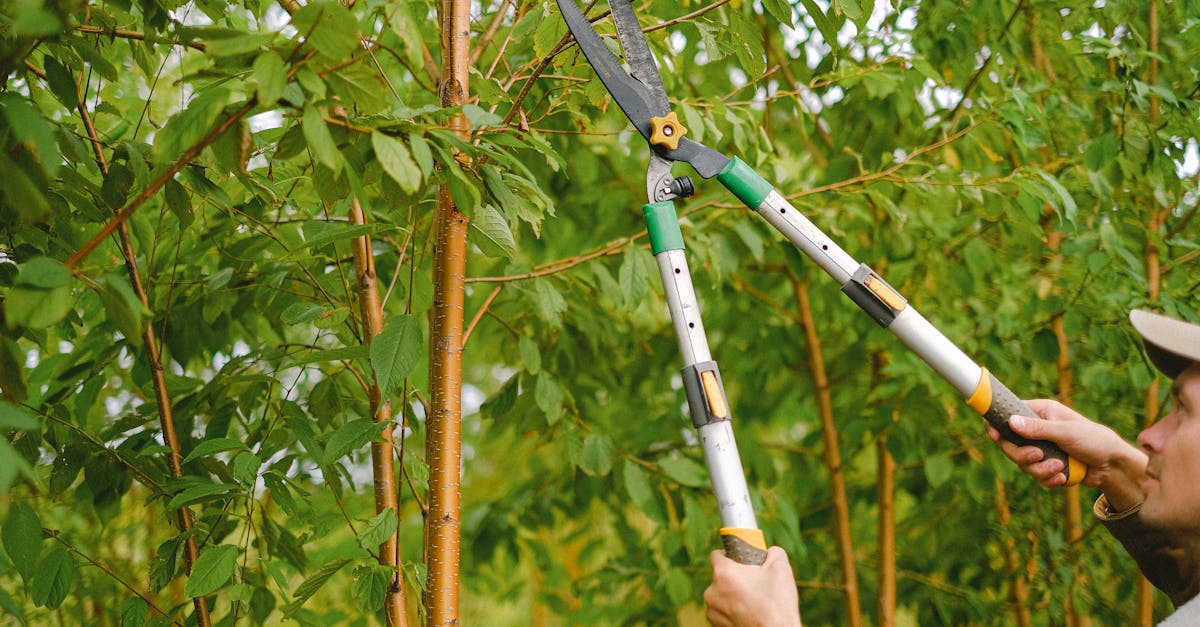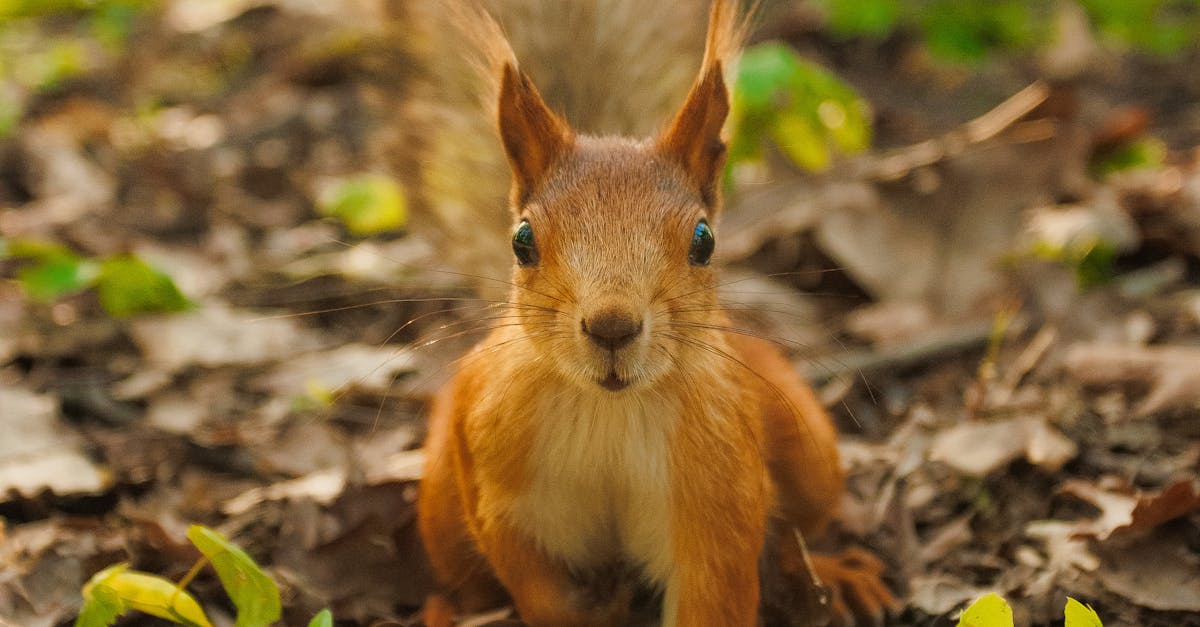
Avoiding Common Pruning Mistakes
When it comes to tree pruning, there are several common mistakes that can impact the health and aesthetics of your trees. One of the most prevalent errors is over-pruning, where individuals may trim off more branches than necessary, leading to stress and potential damage. This can result in stunted growth and leave the tree vulnerable to diseases and pests. Another mistake to avoid is pruning at the wrong time of year. Performing tree pruning near me during periods of active growth can disrupt the tree's natural processes and hinder its ability to recover effectively.
It is crucial to remember that pruning should not be seen as a quick fix but rather a carefully planned and executed process. Rushing through tree pruning can lead to uneven cuts, which not only affect the tree's appearance but also leave it susceptible to infections. Additionally, neglecting to use sharp, clean tools can result in jagged cuts that take longer to heal. By being mindful of these common mistakes, you can ensure that your tree pruning near me efforts are beneficial and promote the overall well-being of your trees.
Preventing Damage to the Tree
When it comes to preventing damage to the tree during pruning, it is crucial to be mindful of the tools you are using. Make sure your pruning equipment is sharp and clean to make precise cuts. Dull blades can lead to ragged cuts that can damage the tree and increase the risk of disease. Before starting the pruning process, sanitize your tools by wiping them down with rubbing alcohol or a mixture of bleach and water to prevent the spread of any potential infections. Remember, precision and cleanliness are key to safeguarding the health of your tree.
Another important factor to consider when preventing damage to the tree during pruning is the timing of the pruning activities. Pruning during the dormant season is often recommended for most tree species, as it minimizes stress on the tree and reduces the likelihood of diseases entering through open wounds. However, for some species, such as spring-flowering trees, it is best to prune right after they have bloomed. To ensure you are following the appropriate timing for your specific tree species, consider consulting a professional arborist or search for reputable tree pruning services like "Tree Pruning near me" for expert guidance tailored to your tree's needs.
Understanding Tree Species Specifics
Understanding the specific characteristics of different tree species is essential for successful pruning. Each type of tree has unique growth patterns, strengths, and weaknesses that should be taken into consideration when developing a pruning plan. When searching for "Tree Pruning near me," it is crucial to identify the species of tree on your property to ensure that the pruning techniques applied are appropriate for that particular tree.
Certain tree species, such as oak or maple, may require different pruning methods compared to pine or cherry trees. For instance, hardwood species generally respond well to heavy pruning, while softwood species may benefit more from light, strategic pruning. By understanding the specifics of each tree species, you can tailor your pruning techniques to promote healthy growth and minimize the risk of damage.
Tailoring Pruning Techniques to Different Types of Trees
To ensure the health and vitality of trees, it is essential to tailor pruning techniques based on the specific species. Different trees have varying growth habits, vulnerabilities, and response to pruning. Seeking professional advice from arborists or searching for "Tree Pruning near me" can provide valuable insights into the unique requirements of different tree species. For example, while some trees benefit from heavy pruning to promote new growth, others may need more delicate trimming to maintain their natural shape and strength.
Understanding the characteristics of the tree species is crucial in determining the most effective pruning approach. For instance, fruit trees may require selective thinning to improve sunlight penetration and enhance fruit production, while ornamental trees might need regular maintenance pruning to control their size and shape. Consulting experts in the field of arboriculture or conducting online searches for "Tree Pruning near me" can help homeowners make informed decisions on the best pruning techniques for their specific tree types.
Pruning Young Trees for Proper Growth
Pruning young trees is crucial for their proper growth and development. By shaping the tree early on, you can establish a strong and healthy structure that will support its growth for years to come. It is advisable to start tree pruning near me as soon as the tree is planted to ensure that it grows in the desired direction and form.
When pruning young trees, focus on removing any damaged, dead, or crossing branches. This will not only improve the tree's overall appearance but also prevent potential issues such as diseases or pests. By maintaining a clear and open canopy, you allow for better air circulation and sunlight penetration, which are essential for the tree's health and growth. Tree pruning near me should be done with precision and care to ensure the tree's long-term vitality and aesthetic appeal.
Establishing Healthy Tree Structure from the Start
Establishing a healthy tree structure from the start is crucial in promoting the long-term health and stability of the tree. Proper pruning techniques during the early stages of growth can help shape the tree's form and structure, ensuring that it develops in a way that is aesthetically pleasing and functionally sound. Tree Pruning near me is an important practice that helps young trees establish strong branches and an overall balanced framework. By removing any dead or crowded branches early on, you can prevent future issues such as weak attachment points and potential hazards.
Additionally, when pruning young trees, it is essential to consider the tree species specifics to determine the most suitable pruning techniques. Each type of tree may have different growth patterns and requirements, so tailoring your approach based on these factors can lead to healthier and more resilient trees in the long run. Consulting with an arborist or tree care professional can provide valuable insights into the specific needs of the tree species in your area, ensuring that your pruning efforts are in line with the best practices for promoting healthy growth.
FAQS
When is the best time to prune a tree?
The best time to prune a tree is typically during the dormant season in late winter or early spring. However, some species may benefit from pruning during other times of the year, so it's important to research the specific needs of your tree.
How much of the tree should I prune at one time?
It is generally recommended to avoid removing more than 25% of a tree's canopy in a single pruning session. Removing too much foliage at once can stress the tree and inhibit its ability to recover properly.
Can I prune a tree myself, or should I hire a professional?
While some smaller pruning tasks can be done by homeowners, it is advisable to hire a professional arborist for larger or more complex pruning jobs. Certified arborists have the expertise to prune trees safely and effectively without causing harm to the tree.
What tools do I need to prune a tree properly?
The tools you need for pruning a tree depend on the size and type of tree you are working on. Common tools include pruning shears, loppers, pruning saws, and pole pruners. It's important to use sharp, clean tools to make clean cuts and minimize damage to the tree.
How can I tell if a tree needs pruning?
Signs that a tree may need pruning include dead or broken branches, crossing or rubbing branches, excessive canopy density, or signs of disease or pest infestation. Regularly inspecting your trees and addressing any issues promptly can help maintain their health and appearance.




